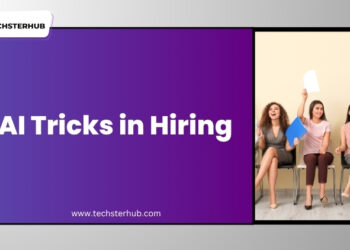Key Takeaways
- Payment tokenization replaces sensitive payment data with a unique token, enabling secure transactions without revealing card details.
- Tokenized payments enhance security, reduce data breaches, and aid in compliance with data protection regulations like PCI DSS.
- Tokenization minimizes merchant costs by reducing the need for stringent data security measures and offering better fraud detection capabilities.
- Common applications include credit cards, digital wallets, in-app, POS, and e-commerce tokenization, securing payments across various environments.
As businesses pivot to digital payments, robust security becomes paramount to safeguard customer trust and meet regulatory demands. Tokenization is a powerful solution, transforming sensitive payment details into secure, non-exploitable tokens.
With payment fraud on the rise, understanding the mechanics and benefits of tokenization is key to staying ahead. In this article, we’ll unpack how tokenized payments help protect customer data, streamline operations, and ensure regulatory compliance. Let’s dive into the advantages, applications, and future of payment tokenization, equipping you with the insights needed to bolster security in digital transactions.
What Is Payment Tokenization?
Payment tokenization is a process that replaces sensitive payment information, such as credit card numbers, with a unique token that can be used to process transactions without exposing the actual card details. This token is typically a randomly generated string of characters linked to the original payment information in a secure vault.
What Are the Benefits of Tokenized Payments?
- Increased security: Tokenization secures payment data by replacing sensitive details with unique tokens, reducing data breach and fraud risks.
- Improved compliance: Payment tokenization helps merchants comply with data security regulations like PCI DSS by eliminating the need to store sensitive payment data, reducing compliance scope, and minimizing penalty risks.
- Reduced costs: It eliminates the need for merchants to store and manage sensitive payment information, removing the need for expensive security measures.
- Enhanced fraud detection: Merchants can compare transaction tokens with stored tokens, identifying discrepancies that indicate potential fraud.
- Improved customer experience: Tokenization simplifies checkout, allowing customers to complete transactions faster, increasing satisfaction and repeat business.
- Scalability and flexibility: Tokenization allows merchants to easily scale payment processing, securely add new methods and channels, and integrate with various payment platforms.
- Future-proofing: Tokenization future-proofs merchants’ payment systems, enabling secure and efficient handling of new payment methods without major infrastructure changes.
What Are Some Examples of Payment Tokenization?
There are many different examples of payment tokenization that are used today. Some of the most common include:
- Credit card tokenization: Websites use tokenization to replace credit card numbers with tokens, allowing transactions to be processed without storing actual card data.
- Digital wallet tokenization: Digital wallets use tokenization to store payment information on devices securely. When making a purchase, the wallet sends a token to the merchant for processing, protecting the card data.
- In-app tokenization: Mobile apps securely store users’ payment information. During purchases, the token is sent to the merchant for transaction processing.
- Point-of-Sale (POS) tokenization: POS systems may use tokenization to protect payment information by replacing the actual credit card number with a token during transactions, ensuring the POS system never stores the card data.
- E-commerce tokenization: E-commerce websites use tokenization to safeguard payment information, replacing the real card number with a token for transaction processing without storing actual card data.
How Does Payment Tokenization Work?
- The customer enters the payment details, including the card number, expiration date, and CVV code, into a form.
- The merchant’s website sends a token request to a payment tokenization service provider. This request includes the customer’s payment information and other relevant data.
- The tokenization service provider generates a unique digital token, a random string of characters representing the customer’s payment card information. The token is created using advanced encryption algorithms and stored securely in the tokenization service provider’s database.
- The tokenized payment information is then sent back to the merchant’s website. The merchant stores the token in its system, replacing the customer’s payment card details.
- When the customer clicks the “Pay Now” button, the merchant initiates a transaction using the tokenized payment information. The token is sent to the payment processor, which routes the transaction to the customer’s card issuer.
- The card issuer verifies the token’s validity and checks whether the customer has sufficient funds. If the transaction is authorized, the payment is processed.
- Once the transaction is complete, the merchant receives a confirmation from the payment processor. The customer may also receive a confirmation email or SMS notification.
For recurring payments, such as subscriptions, the merchant can store the token securely and use it for future transactions without needing the customer to re-enter their payment information.
What Is the Difference Between Tokenization and End-to-End Encryption?
Tokenization and end-to-end encryption are important security measures often used to protect sensitive data. While both technologies play a vital role in safeguarding information, they serve distinct purposes and operate differently.
Key Differences
- Tokenization is reversible, allowing data retrieval with the correct key. End-to-end encryption is irreversible, requiring the encryption key for data recovery.
- Tokenization safeguards static data, while end-to-end encryption secures data in transit.
- Tokenization is more efficient than end-to-end encryption because it doesn’t need constant encryption and decryption.
- Tokenization is simple to integrate, while end-to-end encryption requires more infrastructure changes.
Tokenization and end-to-end encryption can provide enhanced security for sensitive data. For example, a credit card number could be tokenized and encrypted before being transmitted over a network. This combination of technologies helps protect the data from unauthorized access and interception.
Embracing the Future of Secure Payments
As digital payments become more deeply integrated into business operations, adopting technologies like tokenization is crucial. Advanced security features such as tokenization and funds-on-file allow businesses to securely store customer payment data, streamline transactions, and enhance the user experience, all while maintaining PCI compliance.
Ready to elevate your payment security? Download our comprehensive eBook on digital payments in the supply chain to learn how these solutions can optimize and safeguard your payment processes.











